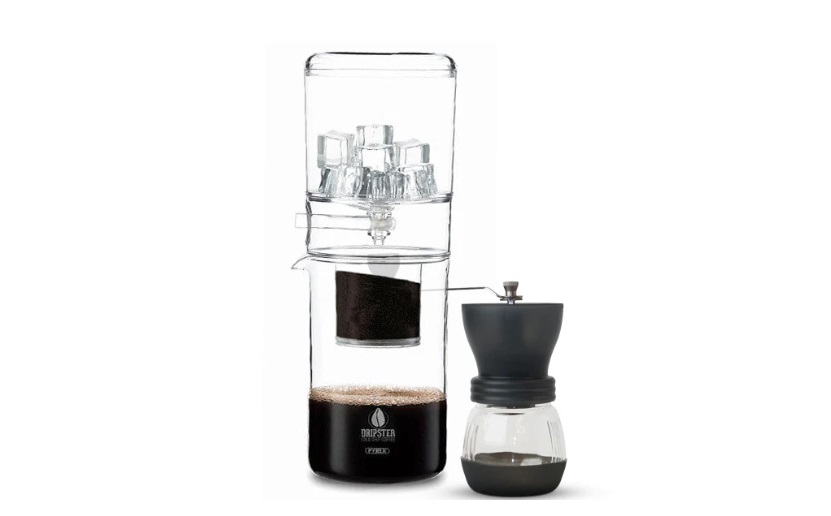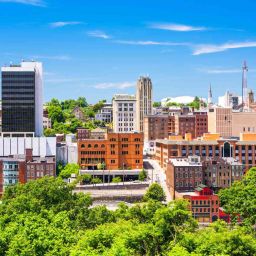
Ice drip coffee, often hailed for its rich and intricate flavor profile, stands out as a unique brewing method in the coffee world. Unlike traditional brewing methods, ice drip coffee involves a slow drip of cold water through coffee grounds, taking several hours to brew a single batch.
This meticulous process allows the water to extract deep flavors and aromas from the coffee beans without the bitterness often associated with hot brews. The result? A cup of coffee that is not only smoother but also less acidic, making each sip a refined experience.
Key Takeaways
- Distinct Flavor Profile: One of the most celebrated aspects of ice drip coffee is its flavor. Because the water used in the brewing process is cold or at room temperature, the coffee tends to be smoother and less acidic than its hot-brewed counterparts. This results in a cup that is gentle on the palate, making it easier to detect subtle flavors that might be overshadowed by acidity in hot coffee.
- Slow Brewing Process: The preparation of ice drip coffee is not for the hurried coffee drinker. The process typically spans several hours, as water slowly drips over the coffee grounds. This slow extraction allows for a thorough and gentle extraction of flavors, which contributes to the coffee’s smoothness and rich profile. It’s a testament to the adage that good things come to those who wait.
- Specialized Equipment: Unlike more common brewing methods that might only require a standard coffee maker or a simple French press, ice drip coffee often necessitates specialized equipment. Common setups include the Yama tower or Kyoto-style drippers, which not only serve a functional purpose but also add an element of visual elegance to the brewing process. However, this specialized equipment can be more costly, making ice drip coffee a bit of an investment compared to other methods.
- Ideal for Coffee Aficionados: Due to its intricate brewing method and the distinct taste it offers, ice drip coffee is particularly appealing to those who are passionate about their coffee and enjoy delving into different brewing techniques. It invites aficionados to explore and appreciate the nuances that come with each cup, making it more than just a caffeine fix but a full sensory experience.
History and Origin of Ice Drip Coffee
The history of ice drip coffee, though not as well-documented as other coffee methods, is deeply intertwined with the coffee culture of East Asia, particularly Japan. The method, known for its meticulous brewing technique, was popularized in Japan and has since spread globally, becoming a staple in specialty coffee shops.
In regions where the appreciation for the craft of coffee is profound, ice drip coffee is celebrated for its clarity and purity of flavor, which highlight the coffee’s inherent characteristics without the interference of high temperatures.
Detailed Brewing Techniques
Understanding the brewing process of ice drip coffee is key to mastering this unique method. The process starts by setting up a drip tower, where ice water is gradually dripped over a bed of coffee grounds. The slow dripping, often taking several hours, allows for a gentle extraction that maintains the delicate flavors and aromas of the coffee.
Equipment Essentials
There are several types of equipment essential for brewing ice drip coffee, each adding a different nuance to the outcome. The Yama tower, for instance, is a popular choice among enthusiasts for its reliability and aesthetic appeal. It typically consists of a glass apparatus that not only looks elegant but also allows the brewer to observe the dripping process closely.
Kyoto-style drippers, on the other hand, offer a more traditional approach. These often use ceramic or glass components and are favored for their ability to produce a coffee that is both strong and nuanced. Whether you choose a Yama tower or a Kyoto dripper, the key is precision in the drip rate and grind size, which together determine the flavor strength and profile of your ice drip coffee.
Comparing Ice Drip Coffee to Other Brewing Methods
Ice drip coffee, cold brew, and hot drip coffee each offer unique characteristics and benefits, appealing to different tastes and preferences. Ice drip coffee is known for its clarity and rich flavor, as the slow extraction process allows subtle flavors to shine without the bitterness associated with heat. This method uses ice-cold water dripping slowly over coffee grounds, resulting in a brew that is smooth and less acidic.
Taste and Acidity
Compared to cold brew, which also uses cold water but steeps the coffee grounds for hours or even days, ice drip coffee typically has a more pronounced flavor and higher acidity, offering a brighter cup. Hot drip coffee, on the other hand, extracts flavors and acids rapidly due to the high temperatures, resulting in a full-bodied but potentially more bitter brew.
Caffeine Content
In terms of caffeine content, hot drip coffee generally leads the pack, as the hot water extracts caffeine more efficiently. Ice drip coffee, while slower, can extract a comparable amount of caffeine due to the long drip time, though it often tastes less intense. Cold brew usually has a higher caffeine concentration due to the long steeping time and often higher coffee-to-water ratio.
Best Practices and Common Mistakes
Achieving the perfect cup of ice drip coffee requires attention to detail, particularly in the drip rate and grind size.
Optimal Drip Rate and Grind Size
The optimal drip rate for ice drip coffee is crucial; too fast, and the water won’t absorb enough flavor, too slow, and the coffee can become over-extracted and bitter. A medium-coarse grind is typically ideal, as it allows the water to flow smoothly through the grounds while extracting enough flavor. Monitoring and adjusting the drip rate throughout the brewing process is recommended to ensure consistency.
Common Pitfalls
One common mistake in brewing ice drip coffee is using the wrong grind size; too fine, and the coffee can clog the drip mechanism, too coarse, and the water may flow through too quickly, resulting in a weak brew. Another pitfall is not maintaining the proper water temperature throughout the process, which can vary the extraction rate and affect the final taste. Regular cleaning and maintenance of the equipment are also essential to prevent any residue build-up that could influence the coffee’s flavor.
DIY Ice Drip Coffee at Home
Creating ice drip coffee at home doesn’t require sophisticated equipment. With some basic household items, you can set up your own system and enjoy this brewing method’s unique results.
Simple Home Setup
Start by finding a tall water container, like a large water bottle, and place it securely above your coffee station. Use a small hole at the bottom for the water to drip through—control the drip rate by adjusting the size of the hole or using tape. Below this, set a coffee filter filled with medium-coarse ground coffee over a carafe or large glass to catch the dripped coffee. Ice can be added to the water container to keep it cold and slow the dripping process.
Basic Recipe
For a basic ice drip recipe, aim for a ratio of about 1:15 of coffee to water. Begin with around 60 grams of coffee and 900 grams of ice-cold water. Adjust the grind size to medium-coarse to ensure a steady drip flow without clogging. Allow the setup to drip for several hours, checking occasionally to ensure the drip rate remains consistent.
FAQs
Can ice drip coffee be made ahead of time and stored?
Yes, ice drip coffee can be made ahead of time. Once brewed, it can be stored in the refrigerator for up to a week without significant degradation in flavor. This makes it a convenient option for those who prefer to prepare their coffee in advance and enjoy it throughout the week.
What are the best beans and grind sizes for ice drip coffee?
The best beans for ice drip coffee are typically light to medium roasts, as they retain their distinct flavors better under the slow extraction process. The ideal grind size for ice drip coffee is medium-coarse. This grind size helps maintain an optimal flow of water through the coffee, ensuring proper extraction without clogging the system.
How does ice drip coffee differ from other iced coffees in flavor and texture?
Ice drip coffee generally offers a cleaner and more refined flavor profile compared to other iced coffee methods like cold brew or traditional iced coffee. It tends to be smoother and less acidic, providing a distinctive clarity in flavor that highlights the coffee’s natural characteristics. The texture is also more delicate, making each sip a more nuanced experience.
Final Thoughts
Ice drip coffee stands out for its intricate brewing method and the exceptional clarity of flavor it can produce. This method invites coffee lovers to slow down and savor the brewing process, uncovering the subtle differences that various beans and grind sizes bring to the final cup. Experimenting with ice drip coffee at home can be a rewarding and delicious venture into the nuances of coffee brewing.









